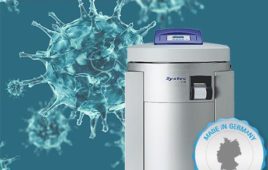Medication errors are among the most common incidents reported in hospitals, often occurring at hospital admission, with a new study led by Monash University and Alfred Health researchers evaluating a collaborative model to reduce medication errors and length of hospital stay.
The study of 8648 patients found that having a partnered pharmacist medication charting* (PPMC) model was associated with a reduction in the proportion of patients with at least one medication error from 66 per cent to 3.6 per cent, and a reduced average length of inpatient hospital stay from 4.7 to 4.2 days. Published in the British Journal of Clinical Pharmacology, it’s the largest study of its kind conducted across multiple hospitals in Victoria, Australia.

Professor of Clinical Pharmacy at Monash University’s CMUS and Director of Pharmacy at Alfred Health, Michael Dooley, said timely medication reconciliation and review of patients’ medications by pharmacists isn’t routine in many settings, and if it occurs, it’s often sometime after admission.
“Errors relating to medications are often not identified or rectified in a timely manner, resulting in patient harm and increased duration of hospitalisation; however, early interventions such as the PPMC model have shown to be effective in significantly reducing medication errors and subsequent patient harm.
“It’s conceivable that the partnered pharmacist charting model contributes to a reduction in inpatient length of hospital stay by improving the timely delivery of appropriate therapy immediately upon the patient’s admission,” added Professor Dooley. Medication error rates in the setting of standard medical charting observed in the pre-intervention phase of the study were consistent with previous studies.
PhD candidate at Monash University’s CMUS, Chief Pharmacy Information Officer and Deputy Director of Pharmacy at Alfred Health, Erica Tong, said potential factors associated with such errors may be the multiple tasks provided by junior medical officers in the setting of an acute admission, and the often-limited history available from patients who are acutely unwell.
“Pharmacists are well-placed to work collaboratively with the medical team to optimize medication therapy at the time of admission. Consideration should be given to implementation and evaluation of the partnered pharmacist charting model that operates around the clock.”
“Implementation of this model to other clinical areas such as surgical and oncology services should be considered, and evaluation of the impact on electronic prescribing systems on this model should also be investigated,” she added.
Demonstrative of the study’s impact, a national credentialing program for partnered pharmacist charting is being implemented, and further expansion of this model across Victorian rural and regional areas, oncology services and private hospitals is underway.
“Expansion of a collaborative medication-charting model to reduce length of hospital stay and medication errors can have a large impact in an era where physician burnout is a major concern, balanced against reducing clinical risk for patients and maximizing the use of resources available,” said Professor Dooley.
Monash University




This has been understood for some time. Similar work in this area was undertaken in Europe and the USA between 1975 – 1990 with pretty much identical results in terms of elucidating and eliminating actual and potential multi-faceted medication errors.